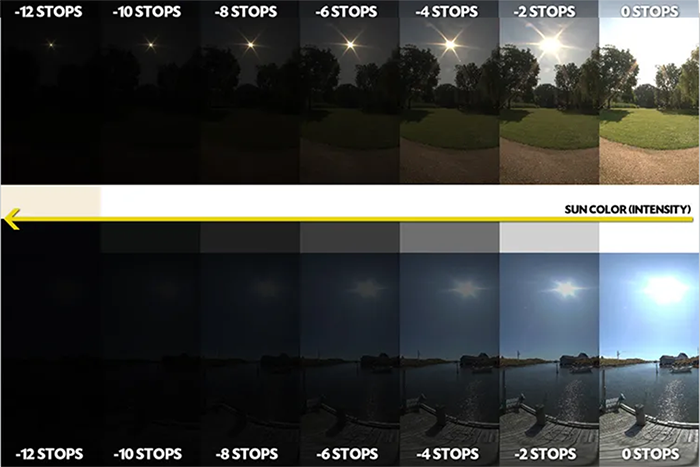In the field of digital image processing, dynamic range is a key metric that determines the richness of detail captured by image sensors under different lighting conditions. SONY STARVIS 2 technology brings a wider dynamic range to camera devices by introducing advanced photosensors and image processing algorithms, making them perform better in scenes with complex light.
SONY’s new FCB-EV9520L uses the latest sensor STARVIS 2 CMOS to provide outstanding image quality and detail display capabilities.

The importance of dynamic range
Dynamic range refers to the ability of the image sensor to capture the details of the darkest and brightest areas at the same time. Traditional image sensors can be over – or under-exposed in highlighted or shaded areas, resulting in loss of image detail. Higher dynamic range can solve this problem, providing richer detail and better contrast, while also providing more accurate color reproduction and more flexible post-processing.
SONY STARVIS 2 technology breakthrough
SONY STARVIS 2 technology is the latest image sensor technology from SONY Corporation to achieve a wider dynamic range without sacrificing STARVIS ‘low illumination performance. By using higher quality photosensors and advanced image processing algorithms, STARVIS 2 technology is able to maintain better detail in highlighted and shaded areas while providing higher contrast.
1. high quality photosensitive components
STARVIS 2 technology uses high-quality photosensitive components with higher sensitivity and lower noise levels. This means that in low light conditions, the sensor is able to capture more detail and reduce noise in the image. At the same time, these high-quality photosensors also have a broader spectral response range, which can better adapt to different lighting conditions.
2. Advanced image processing algorithm
STARVIS 2 technology also utilizes advanced image processing algorithms to improve dynamic range. These algorithms enable intelligent exposure control and local contrast enhancement of images, allowing more detail to be preserved in scenes with complex lighting. With intelligent exposure adjustment, the sensor can balance brightness between highlighted and shaded areas and provide better contrast.

SONY STARVIS 2 High dynamic range
3. Use ClearHDR
SONY STARVIS 2 uses the capabilities of ClearHDR to eliminate blurring and staining. This feature increases saturation capacity, uses gain difference (the sensitivity of brightness) to replace time difference for synchronous shooting, and it provides better detail retention and contrast enhancement by combining multiple images with different exposure times.
4. Linkage with AI
Today’s cameras are almost all linked to AI. There are various ways of linkage, such as carrying AI technology on the camera or uploading the image to the cloud and then being analyzed by AI, but the actual shooting of images can only rely on image sensors. No matter how powerful the image analysis capabilities of AI are, if the image sensor can’t take the image correctly, everything will be out of the question. Therefore, the linkage with AI was considered from the beginning of the development of STARVIS 2.

SONY STARVIS 2 works with AI
SONY FCB-EV9520L uses a STARVIS 2 CMOS sensor with high photosensitive performance, low noise levels, high dynamic range and high frame rate support. This enables the FCB-EV9520L to provide sharper, finer image detail and more natural performance.
Conclusion: SONY STARVIS 2 technology achieves higher dynamic range by introducing high-quality photosensors and advanced image processing algorithms. This breakthrough technology leads to sharper, richer images, allowing camera equipment to perform well in environments with complex light. In the future, with the continuous development of technology, we can expect more innovative image sensor technology to bring us a better visual experience.
(Some content refer to: SONY official website)
 Sony FCB camera block
Sony FCB camera block